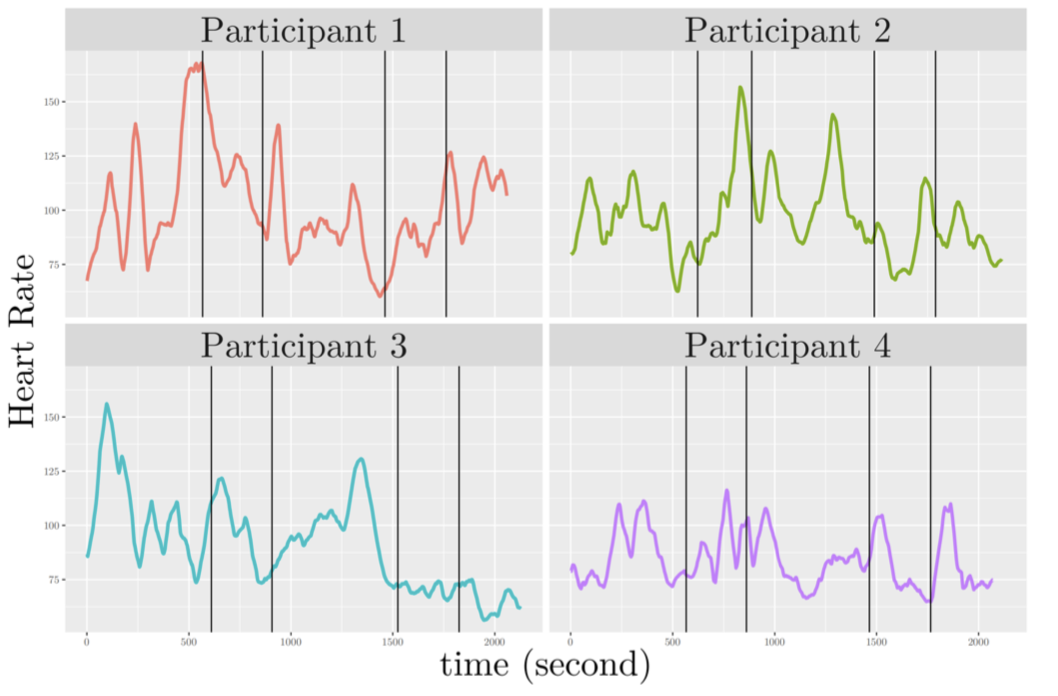Abstract
Intensive longitudinal biomarker data are increasingly common in scientific studies that seek temporally granular understanding of the role of behavioral and physiological factors in relation to outcomes of interest. Intensive longitudinal biomarker data, such as those obtained from wearable devices, are often obtained at a high frequency typically resulting in several hundred to thousand observations per individual measured over minutes, hours, or days. Often in longitudinal studies, the primary focus is on relating the means of biomarker trajectories to an outcome, and the variances are treated as nuisance parameters, although they may also be informative for the outcomes. In this paper, we propose a Bayesian hierarchical model to jointly model a cross-sectional outcome and the intensive longitudinal biomarkers. To model the variability of biomarkers and deal with the high intensity of data, we develop subject-level cubic B-splines and allow the sharing of information across individuals for both the residual variability and the random effects variability. Then different levels of variability are extracted and incorporated into an outcome submodel for inferential and predictive purposes. We demonstrate the utility of the proposed model via an application involving bio-monitoring of hertz-level heart rate information from a study on social stress.
Keywords Bayesian hierarchical models, Intensive heart rate, Joint models, Intensive longitudinal biomarker, Michigan Work-Life Study, Social Stress, Variability.
